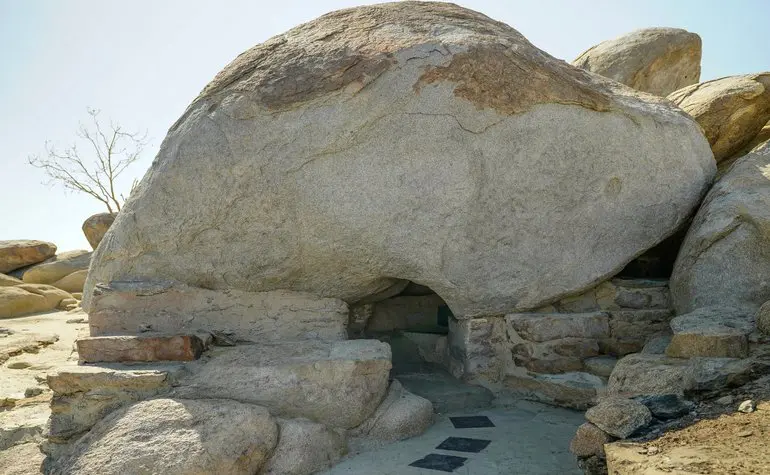The Story of Hijrah: From Makkah to Madinah
The Hijrah took place in the year 622 CE, and it was a response to escalating persecution faced by the early Muslim community in Makkah. Despite facing hostility and threats, Prophet Muhammad (peace be upon him) remained committed to his mission of spreading the message of Islam. However, when the situation in Makkah became unbearable, Allah instructed the Prophet to migrate to Madinah, a city that would welcome him and his followers.
The Quran references this event in Surah Al-Anfal:
“And [remember] when those who disbelieved plotted against you to restrain you or kill you or evict you [from Makkah]. But they plan, and Allah plans. And Allah is the best of planners.” (Quran 8:30)
With the guidance of Allah, the Prophet (peace be upon him) and his close companion Abu Bakr (may Allah be pleased with him) set out on this journey. They took refuge in the Cave of Thawr to evade their pursuers, a moment mentioned in the Quran:
“If you do not aid the Prophet – Allah has already aided him when those who disbelieved had driven him out [of Makkah] as one of two, when they were in the cave and he said to his companion, ‘Do not grieve; indeed Allah is with us.’” (Quran 9:40)
After safely arriving in Madinah, the Prophet was greeted with warmth and hospitality. The Hijrah marked the beginning of a new chapter for the Muslim community, as they were now able to practice their faith freely and openly. It also marked the start of the Islamic calendar, known as the Hijri calendar, highlighting the significance of this event.
Lessons and Significance of Hijrah
1. Trust in Allah’s Plan:
The Hijrah teaches Muslims the importance of placing their trust in Allah, even in the face of adversity. Despite the dangers of the journey, the Prophet Muhammad (peace be upon him) remained steadfast, trusting in Allah’s protection. This unwavering faith is a lesson for all Muslims to rely on Allah’s wisdom and guidance.
2. The Foundation of the Ummah:
The Hijrah symbolizes the birth of the Muslim Ummah, a community united by faith rather than tribal or ethnic ties. In Madinah, the Prophet Muhammad (peace be upon him) established a society based on justice, equality, and mutual respect. The Constitution of Madinah, drafted shortly after the migration, laid the groundwork for governance and coexistence, emphasizing the rights and responsibilities of all citizens, Muslim and non-Muslim alike.
3. Resilience in the Face of Persecution:
The Hijrah reminds Muslims of the importance of resilience and perseverance. Despite facing severe persecution in Makkah, the Prophet and his followers did not give up on their mission. Their determination to spread the message of Islam serves as a source of inspiration for Muslims facing challenges in their faith or lives.
4. Brotherhood and Support:
Upon arriving in Madinah, the Prophet Muhammad (peace be upon him) established a bond of brotherhood between the Muhajirun (migrants from Makkah) and the Ansar (helpers from Madinah). This spirit of brotherhood and mutual support is a cornerstone of the Islamic faith, encouraging Muslims to help one another and build strong, supportive communities.
The Hijrah in Modern Times: Reflecting on Its Lessons
The Hijrah’s significance is not limited to a historical event; it serves as a timeless reminder of the values of faith, perseverance, and community.
Today, Muslims can reflect on the Hijrah by strengthening their own faith and contributing positively to their communities. The Hijrah teaches us to be compassionate leaders, to uphold justice, and to work towards creating societies where all individuals can live in peace and harmony.
Reflection from the Sunnah
The Sunnah of the Prophet Muhammad (peace be upon him) further emphasizes the significance of the Hijrah. In a hadith recorded in Sahih Bukhari, the Prophet said:
“Actions are judged by intentions, so each man will have what he intended. Thus, he whose migration was for Allah and His Messenger, his migration was for Allah and His Messenger.” (Sahih Bukhari)
This hadith underlines that the intention behind the Hijrah was solely for the sake of Allah. It serves as a reminder for all Muslims to align their actions with sincerity and purpose, seeking Allah’s pleasure in all that they do.
Conclusion
The Hijrah of Prophet Muhammad (peace be upon him) to Madinah marks a defining moment in Islamic history. It is a powerful reminder of faith, trust in Allah, and the strength of community. As we remember the Hijrah, let us reflect on its lessons and strive to embody the principles of unity, compassion, and perseverance in our daily lives.
